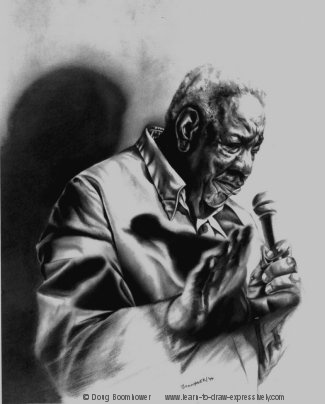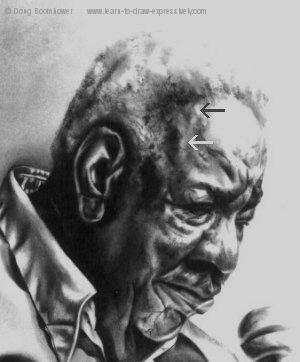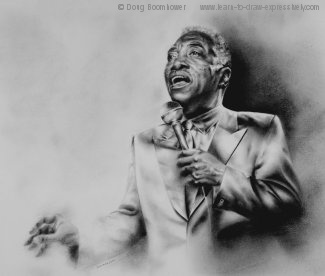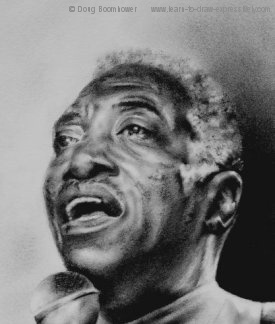How to Draw Hair
. . . that really does look like hair
Learning how to draw hair can play an incredibly important role when drawing a person's portrait. The importance of that role can vary depending on the subject and the artistic approach you decide to take.
To me, the most important thing to remember, is not to get caught up in trying to draw every single hair. Rather, let yourself see the big picture. See how light and shade fall across the subject’s hair. This will define his or her hair more realistically than any attempt to draw individual hairs.
Individual hair will play a role, however. The contrast of the occasional individual hair against broader areas will create interest and add a great deal to the overall impression of real hair. (Two or three well-placed hairs can go a long way.)
How to Draw Hair - Close Observation
Another good technique in learning how to draw hair, is to closely observe the model’s hair and look for a unique area which makes that subject’s hair individually his or hers.
Then spend some time detailing that area. It might be an area around the temples, the forehead, behind the ear, or anywhere on the head.

Big Miller (1922 - 1992) Singer, Trombonist
Big Miller's hair had turned completely white by this time. Note how white, curly hair is implied with few details.
A great deal of this drawing was done with brushes.
The top of his head (don't know how much will show up on your monitor) has been very lightly dabbed with a soft brush containing a small amount of charcoal. These light marks imply a full head of hair.

The top of Big Miller's head actually has no definition. (It disappears into the background paper.)
Because of the carefully chosen dabs of charcoal, the viewer actually imagines he sees a clearly defined head of white hair. Viewer participation like this, always adds to the interest of the artwork.
As I slowly move down I start to add more detail. There are dark shadows (done with a 3B Ritmo pencil), which contrast nicely with the top of the head, and also by contrast, emphasize the whiteness of the hair.
In this area, you will see clearly defined shadows, again done with 3B charcoal pencils. These shadows never conflict with the singer’s white hair, but rather they always emphasize how white his hair is.
Notice the obvious white areas (shown by arrows), which give definition to this section of the forehead. The only place you see actually drawn hairs is just above and to the right of the ear. These few lines were done with a 2B pencil.
In summation, I’ve implied a full head of white hair, primarily using an interplay of lights and darks.

"Big" Joe Williams (1918 - 1999)
Jazz Vocalist

Note the similarity of the hair in the two singers, Joe Williams and Big Miller (above). Both men had curly white hair so I used a similar technique for each drawing.
The only real difference is, you don’t see as much white space on Joe Williams’s head. In both cases, the hair was done with pencil stumps or brushes. I often tap the charcoal onto the paper.
Rather than using white chalk to suggest the hair, I simply expose the white paper. The dark shadows around the ear and in the forehead create a contrast, which further emphasizes the white hair.
You won’t see any lines suggesting individual hairs, but rather what you will see is an overall pattern of lights and darks. Close observation will show dappled areas on the side of his head. This was done to add interest and realism. I did it by carefully tapping an HB charcoal pencil in different areas.
In order that the hair doesn't look like it was glued on to the head, the transition at his hairline is softened with brushes.
If you liked this page on "How to Draw Hair", continue here for more on drawing hair with white chalk and a kneaded eraser.
To search my site, enter your search term in the box below, and click on the Search button. (Google ads may appear at the top of the results page ... your search results will be just below.)
Return from How to Draw Hair to Learn to Draw Home Page




